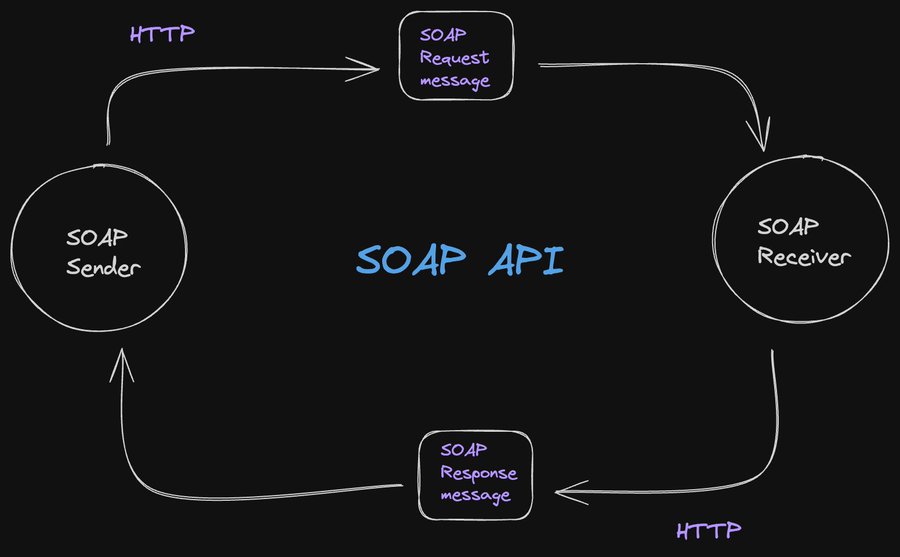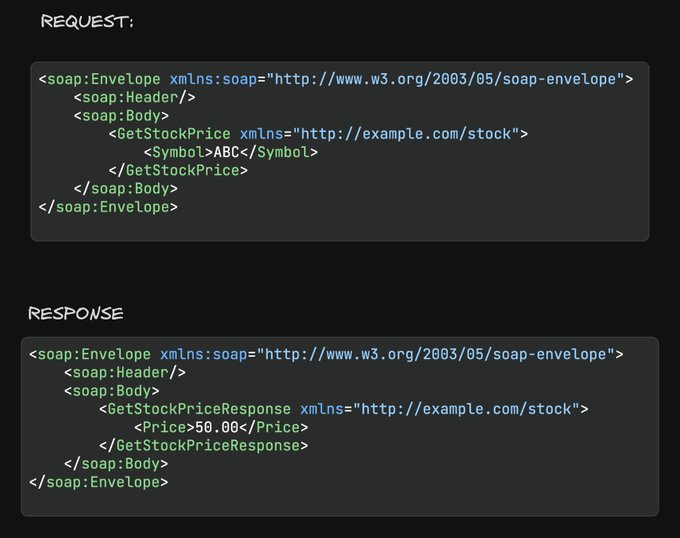SOAP API in a nutshell.
 Ian Carson
Ian Carson- What is SOAP API.
SOAP(Simple Object Access Protocol) is a protocol for exchanging structured information in the implementation of Web Services. It uses XML(Extensible Markup Language) as the format for the messages and relies on the other application layer protocols such as HTTP,SMTP, and more, for message negotiation and transmission.
SOAP APIs are widely used for communication over the internet between Applications. Below is a breakdown of the SOAP API key concepts and components.
- SOAP Envelope.
A SOAP message consists of an envelope that contains the body and the header components. The envelope defines the structure of the message.
- SOAP Header.
The header is an optional part of the SOAP message and contains additional information about the message, such as authentication or routing details.
- SOAP Body.
The body is the main part of the SOAP message and contains the actual data being exchanged between the client and the server.
- XML.
SOAP messages are XML documents which provides a way to structure data using tags, attributes, and values, making it a versatile and widely accepted data format.
- Methods.
SOAP APIs define methods(functions or procedures) that can be called remotely. These methods are described in a Web services Description language(WSDL) file. These files serves as documentation for the API and specifies the methods, their input parameters, and their response structures.
- Transport protocol.
SOAP messages can be transported over various protocols, with HTTP being the most common choice. This means that the SOAP API can be used over the same infrastructure as regular web applications.
- Error handling.
SOAP APIs have built-in error handling, which includes standardized fault elements in SOAP messages to convey error information.
- Security.
SOAP APIs often support various security mechanisms, including SSL/TLS for Transport layer security and WS-Security for message-level security, allowing for encryption, authentication, and authorization.
- Interoperability.
SOAP is designed to work across different platforms and programming languages. This makes it a good choice for integrating systems that use different technologies.
- WSDL(Web Services Description Language).
This is an xml-based document that defines the structure and behaviour of SOAP API. It provides a clear description of the available methods, their input and output parameters, and the endpoints URLs.
- Tools and Libraries.
There are various tools and Libraries available in different programming languages to work with SOAP APIs, making it easier to create and consume SOAP API services.
To work with SOAP APIs, you'll need to understand how to create and send SOAP requests, as well as how to parse and handle SOAP responses. Additionally, you may need to generate or consume WSDL file to understand the API structure.
It is worth noting that while SOAP was once a popular choice for Web services, REST(Representational State Transfer) has gained significant popularity in recent years due to its simplicity and lightweight nature.
ultimately, the choice between REST and SOAP lies with the project structure and its requirements.
Thank you for stopping by and see you in the next one.
Credits to @ainasanghi on X(Formerly Twitter)
Subscribe to my newsletter
Read articles from Ian Carson directly inside your inbox. Subscribe to the newsletter, and don't miss out.
Written by

Ian Carson
Ian Carson
A Disciplined, keen on details, and curious problem solver. I read and code a lot. I believe in Teamwork, Accountability, Transparency, and Competency.

